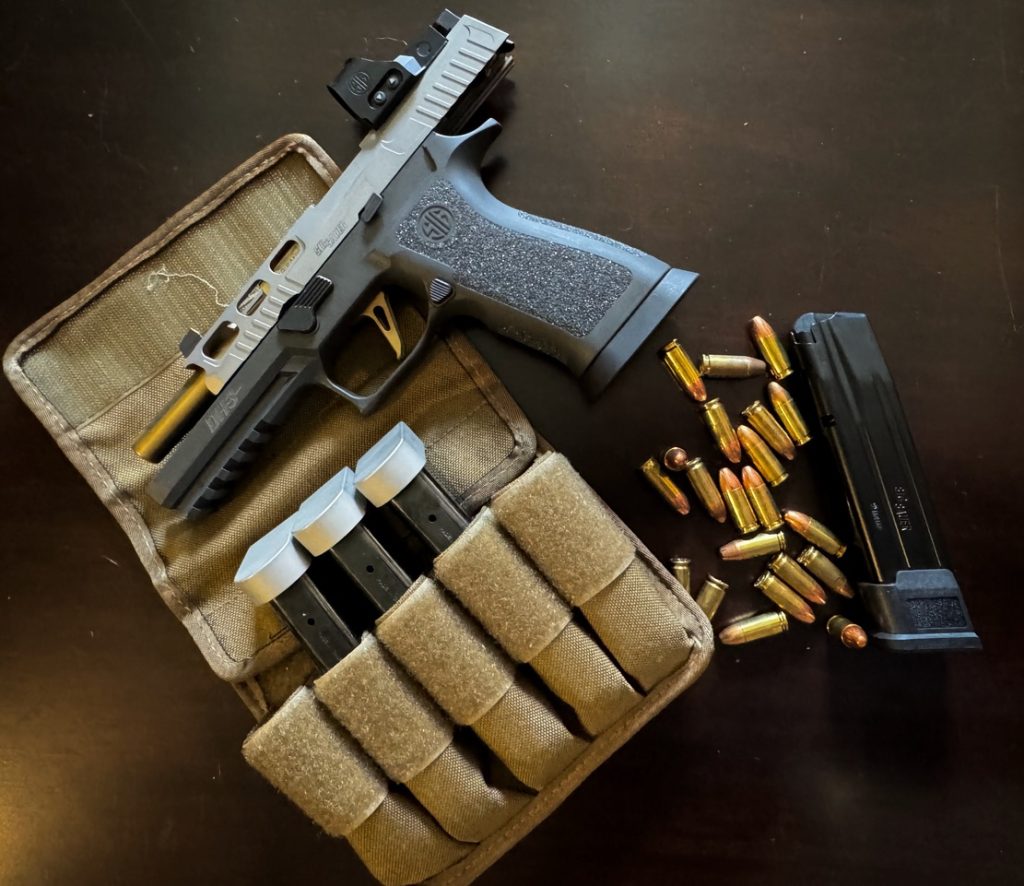
You learn a lot from competition. Dealing with pressure, time constraints, performance anxiety and other tensors give an occasional additional experience: choking. All those are great teachers about preparation in all aspects of life.
Shooting the Metal Madness Homecoming rimfire match in Kentucky a couple of weeks ago taught me that what I’d thought was preparedness…wasn’t. Instead, I was preparing to fail. Fortunately, I learned the lesson in a non-critical situation. Embarrassment in competition is decidedly better than failing in an emergency.
Stepping to the line with my “always dependable” rimfire magazines, I was totally unprepared for the catastrophic failure to feed issues I encountered. I was baffled. The mags and ammo had performed flawlessly together before.
That’s why I have always been particular about loading them. Especially when I wasn’t certain when I’d be shooting them again. I always stored competition mags at a max 80 percent capacity. I would top them off as I’m preparing to actually shoot a competition.
In Kentucky, the twenty percent I’d loaded at the line ran great. The pre-loaded ammo had “issues.” The issue was determined during a post-mortem after an awful stock rifle performance.
I’d pre-loaded the magazines, then completely ignored them for years. They’d been bumping around in my range bag or laying in the safe for longer than is prudent.
Like a bad retailer, I hadn’t rotated my stock. The old ammunition — despite working fine after I took it out and reloaded it — had essentially gotten “gunked up” in my magazines.
My less than outstanding performance has caused a mass reorganization of my ammunition and magazines. Pre-loading my magazines, which I thought prudent at the time actually introduced another potential point of failure.
It also pointed out the fact that I’m not nearly so particular about my magazines and ammunition after an event as I am during it. Checking the magazines on my 9mm competition pistol was proof of that.
I keep the guns immaculately clean and assiduously oiled. When I unloaded the magazines, I realized another problem waiting to happen. Instead of being filled with match-grade competition ammunition, I found it loaded with rounds from three different manufacturers in two different bullet weights. That’s NOT a recipe for consistency.

That was eye-opening. But my Smith & Wesson Shield stunned me. As the gun I normally take along when traveling, I thought it absolutely ready-to-go, right out of the safe. It wasn’t. The battery in the optic was dead. The magazine was filled with three different types of bullets in varying weights. Two of the rounds (hollow points) looked more like the contact posts on a corroded AA battery than pistol rounds.

The photos don’t lie and I’ve included them because I’m likely not the only person to put loaded guns and magazines in the safe and literally forget about them.
This week I’ve spent a considerable amount of time unloading magazines, wiping down ammunition and re-stowing them..separately. It’s been a lot less fun that shooting, but better than worrying about a magazine/ammo malfunctions at some point in the future.
If you ask a group of shooters how often you should rotate the ammunition in your magazines, you’re probably going to begin a spirited debate, if not an outright argument. I’ve never seen a definitive answer, but I’ve heard lots of differing opinions.
I can’t give you the answer, but I can tell you that it’s possible to create problems even when you believe you’re avoiding them. I don’t know the right cycle time for magazines and ammo, but I definitely know when I’ve waited too long.
We’ll keep you posted.


I rotate my ammo stocks, but am regularly shooting 10+ yr old rounds. In all my life of shooting stock up to 25+ yrs old, I’ve never had any of it “gunk” in my guns.
I can’t be sure, but I suspect the “gunk up” comment was lint and dust in the magazine springs, accumulating in his range bag over months and years of bouncing around.
BTDT with ammo for my PCC “home security away from home” comp’ PCC that worked at home but in competition it was less than reliable. It was a terrible match but I also fixed the problem.
BTW, those who don’t shoot competition and think they are ready are just deluding themselves; unless they’re military or LEO who has been under fire. Shooting paper when nothing is on the line and shooting it with witnesses and under time adds stress. Think you won’t feel stress when lives are on the line? Much better to conquer it when it’s only time at risk.